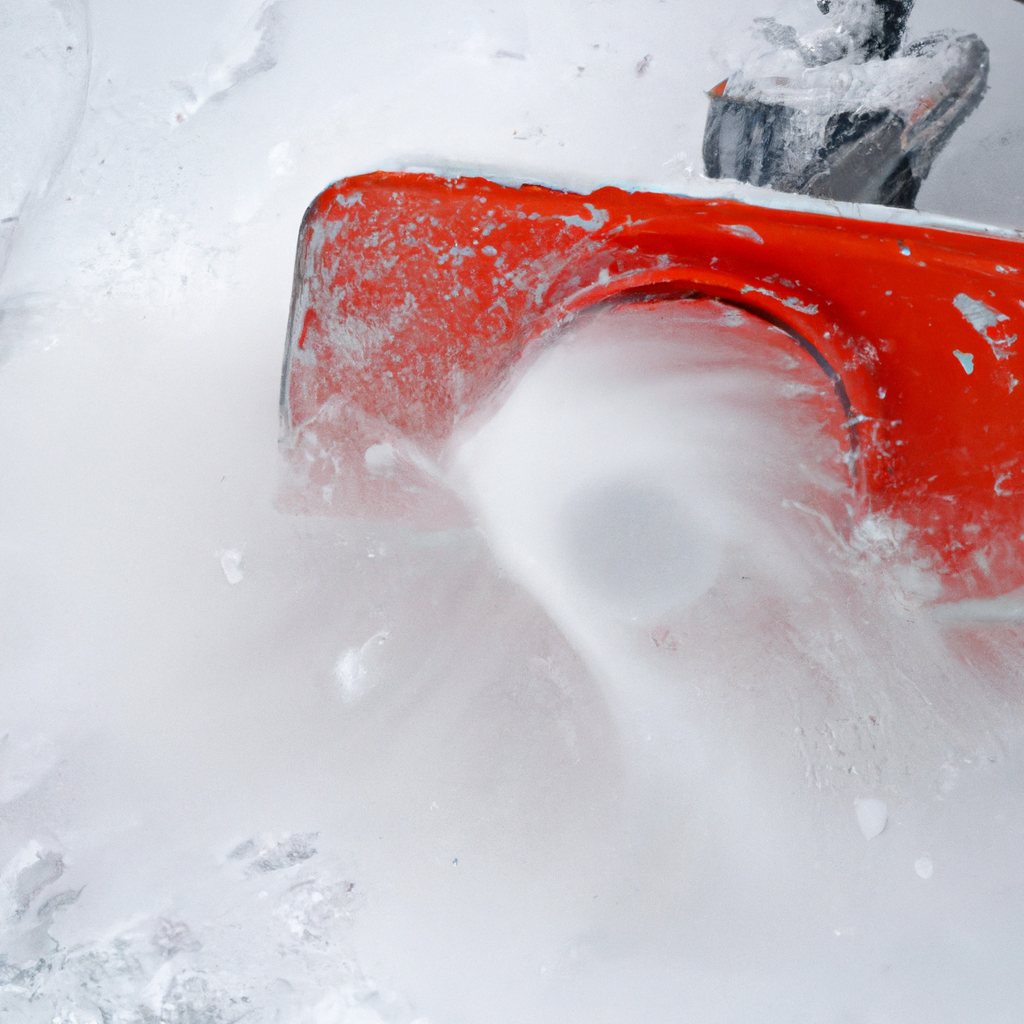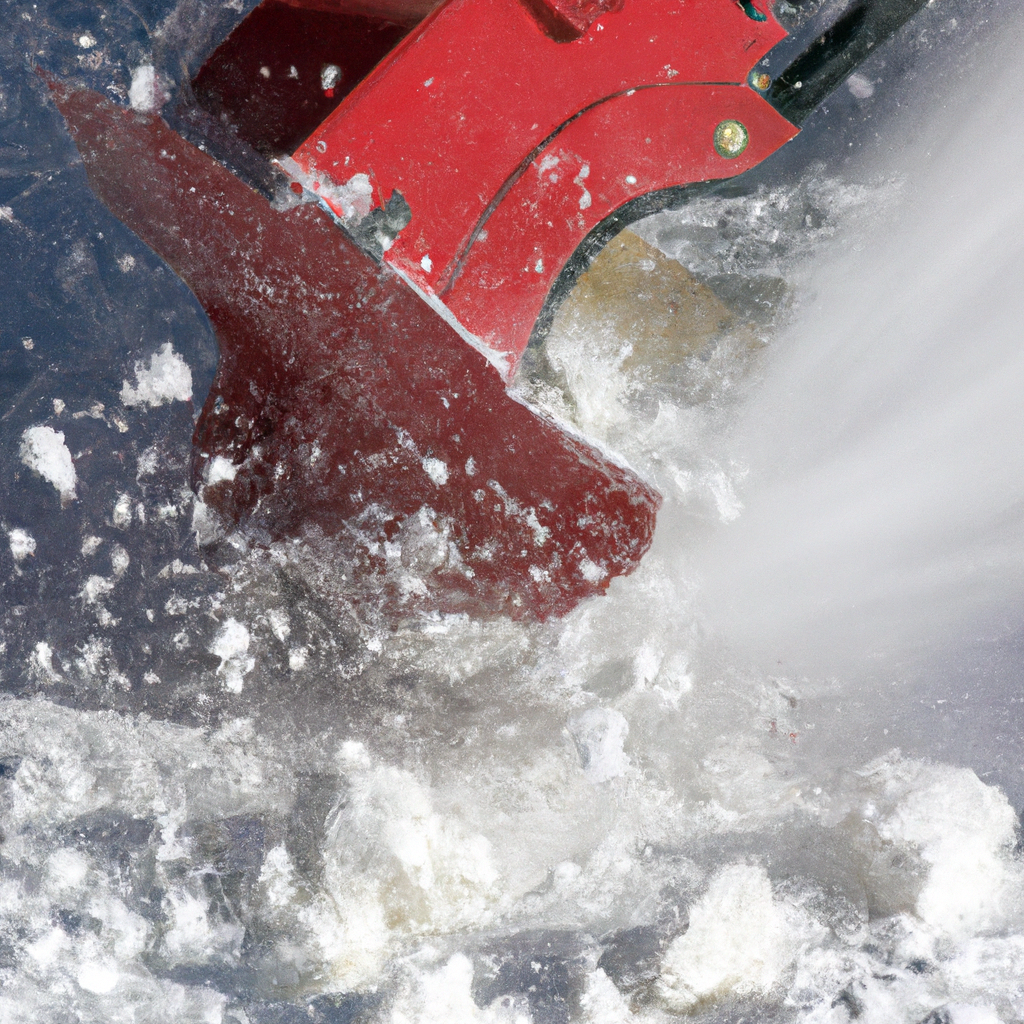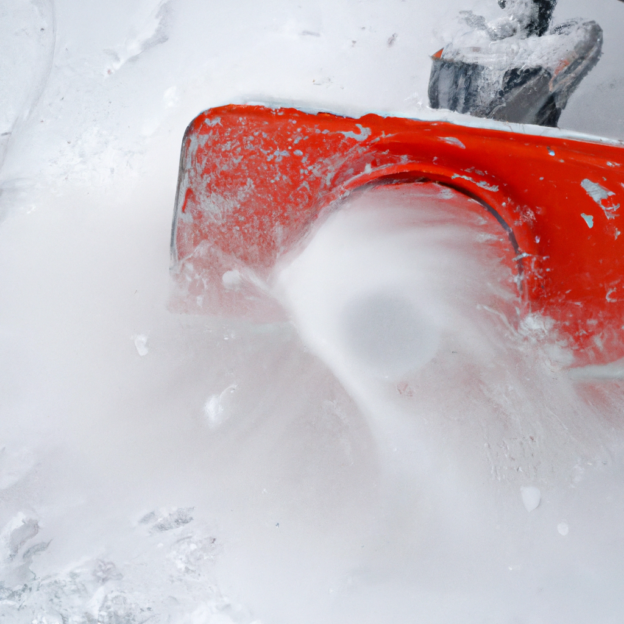Alright, let’s talk about snowblowers and their vibrations. We all know that snowblowers are handy machines that help us clear away the snow during the winter months. But have you ever wondered how much vibration is considered normal for a snowblower? You don’t want your machine shaking all over the place, potentially causing damage or making your snow removal task a lot more strenuous. In this article, we’ll explore the world of snowblower vibrations and find out what is considered normal. So, buckle up and let’s dive into the fascinating world of snowblowers and their vibrations!

1. Types of Snowblowers
Snowblowers come in different types, each designed for specific snow-clearing needs. Understanding the different types of snowblowers will help you make an informed decision when choosing the right one for your winter maintenance tasks.
1.1 Single-stage snowblowers
Single-stage snowblowers are lightweight and compact machines that are ideal for light to moderate snowfall. These snowblowers use an auger to gather and throw snow. They are easy to maneuver and are suitable for small to medium-sized driveways and sidewalks. However, they may struggle with heavier or wet snow.
1.2 Two-stage snowblowers
Two-stage snowblowers are more powerful and versatile than single-stage ones. They have an auger that gathers the snow and an impeller that throws it out through a chute. Two-stage snowblowers can handle larger amounts of snow and are suitable for larger areas. They are more efficient in clearing heavy, wet, or compacted snow.
1.3 Three-stage snowblowers
Three-stage snowblowers are the most powerful and robust option available. They feature an additional accelerator that helps break up icy snow or hard-packed snowbanks before the auger and impeller throw it out. Three-stage snowblowers are ideal for large, wide driveways, and areas with heavy snowfall, making them suitable for commercial use.
2. Causes of Vibrations in Snowblowers
Vibrations in snowblowers can occur due to various factors. Identifying the causes is essential to ensure smooth and efficient operation of the machine.
2.1 Engine imbalance
One common cause of vibrations in snowblowers is an engine imbalance. Imbalanced engines can lead to excessive vibrations, which can impact the overall operation and performance of the snowblower.
2.2 Auger imbalance
An imbalance in the auger, the component responsible for gathering the snow, can also contribute to vibrations. Over time, the auger can become misaligned or worn, leading to imbalances and increased vibration levels.
2.3 Impeller imbalance
Similar to the auger, the impeller, which throws the gathered snow out through a chute, can also experience imbalances. This can result from wear and tear, improper maintenance, or damage to the impeller blades.
2.4 Loose components
Loose components within the snowblower assembly, such as bolts, nuts, or brackets, can create vibrations. Regular maintenance and inspections are necessary to ensure all parts are securely fastened.
2.5 Worn or damaged parts
Worn or damaged components can result in imbalance and vibration issues. Parts such as belts, pulleys, bearings, or bushings should be inspected regularly and replaced as needed.
2.6 Belt or pulley issues
Snowblower vibrations can also be caused by issues with the belts or pulleys. Damaged or worn belts can lead to improper rotation and, in turn, increased vibrations.
2.7 Excessive engine speed
Running the snowblower at excessively high engine speeds can create additional vibrations. It is important to operate the machine within the recommended speed range specified by the manufacturer.
3. Factors Affecting Vibration Levels
Several factors can contribute to the levels of vibration experienced in a snowblower. Understanding these factors will help you manage and minimize vibrations effectively.
3.1 Snow conditions
The type and condition of the snow being cleared can impact vibration levels. Wet, heavy, or compacted snow generally requires more effort from the snowblower, leading to increased vibrations.
3.2 Surface irregularities
The terrain and surface irregularities also affect vibration levels. Uneven surfaces, bumps, or debris hidden beneath the snow can cause the snowblower to vibrate more.
3.3 Operator technique
The operator’s technique and experience can influence the level of vibrations. Smooth, controlled movements and proper handling of the snowblower can help minimize vibrations.
3.4 Equipment maintenance
Regular maintenance plays a significant role in managing vibration levels. Proper lubrication, adjustments, and inspections of components can reduce vibrations and ensure optimal performance.

4. Acceptable Vibration Range
Determining the acceptable vibration range for a snowblower is crucial in assessing its performance and identifying potential issues.
4.1 Snowblower manufacturer guidelines
Snowblower manufacturers often provide guidelines regarding acceptable vibration levels for their specific models. These guidelines can serve as a reference point when evaluating vibration severity.
4.2 User experience reports
User experience reports can also provide insights into acceptable vibration ranges. By reading feedback from other snowblower owners, you can gain a better understanding of what is considered normal and within acceptable limits.
5. How to Measure Snowblower Vibration
Measuring snowblower vibration accurately is important to assess its performance and identify any abnormalities or issues.
5.1 Using a vibration meter
A vibration meter is a specialized tool that measures vibrations in units like G-force or velocity. By placing the meter on the snowblower’s handle or body, you can determine the vibration levels accurately.
5.2 Manual evaluation techniques
Manual evaluation techniques involve physically assessing the snowblower for any visible vibrations, abnormal noises, or difficulty in operating the machine. While subjective, these techniques can provide a quick assessment of the overall vibration levels.
6. Common Signs of Excessive Vibration
Excessive vibrations can indicate underlying issues or maintenance requirements in a snowblower. Being aware of common signs will help you identify and address problems promptly.
6.1 Increased noise levels
Unusual or louder noise levels can be a sign of excessive vibrations. Excess vibration can cause parts to rub together or become misaligned, resulting in increased noise during operation.
6.2 Difficulty in maneuvering
If you find it increasingly challenging to maneuver the snowblower, it may be due to excessive vibrations. These vibrations can make it harder to control and steer the machine effectively.
6.3 Reduced efficiency
Excessive vibrations can have a direct impact on the efficiency of the snowblower. If you notice a decrease in snow clearing performance or uneven snow distribution, it may be a result of increased vibrations affecting the machine’s overall effectiveness.
6.4 Increased operator fatigue
Excessive vibrations can also lead to increased fatigue for the operator. Prolonged exposure to strong vibrations can cause discomfort, and it may become more tiring to operate the snowblower for extended periods.
7. Dangers and Consequences of Excessive Vibration
Ignoring excessive vibrations in a snowblower can lead to various dangers and consequences, affecting both the machine and the operator.
7.1 Damage to snowblower components
Continued operation with excessive vibrations can result in damage to various components of the snowblower. This can lead to costly repairs or even render the machine unusable.
7.2 Increased wear and tear
Excessive vibrations can accelerate wear and tear on the snowblower’s parts, shortening their lifespan and requiring more frequent replacements. Increased maintenance and repair costs can be a consequence of prolonged vibration issues.
7.3 Safety hazards for the operator
Strong vibrations can pose safety hazards to the operator. Fatigue and discomfort resulting from excessive vibrations can lead to reduced focus, increasing the risk of accidents or injuries during snow clearing tasks.
8. Maintenance Tips to Reduce Vibration
Proactive maintenance can play a significant role in reducing snowblower vibrations and ensuring optimal performance.
8.1 Regular inspection and cleaning
Perform regular inspections to identify any signs of wear, damage, or loose components. Clean the snowblower after each use to prevent debris from accumulating and causing imbalances.
8.2 Verify belt tension
Ensure that the belts are properly tensioned according to the manufacturer’s guidelines. Loose or overly tight belts can create vibrations and affect overall performance.
8.3 Check and tighten fasteners
Regularly check and tighten all fasteners, including bolts, nuts, and brackets. Loose components can result in vibrations and compromises the snowblower’s stability.
8.4 Balance auger and impeller
If you notice any imbalances in the auger or impeller, consider balancing them. Misaligned or worn components can create excessive vibrations and affect performance.
8.5 Replace worn or damaged parts
Replace worn or damaged parts promptly to avoid further vibration-related issues. Components such as belts, pulleys, bearings, or bushings should be replaced with high-quality parts that meet the manufacturer’s specifications.
9. When to Seek Professional Assistance
In some cases, resolving vibration issues may require professional expertise. It is important to know when to seek professional assistance.
9.1 Persistent excessive vibrations
If vibrations persist even after performing the recommended maintenance steps, it may indicate more complex issues that require professional diagnosis and repair.
9.2 Unusual noises
Strange or unfamiliar noises, in addition to excessive vibrations, could indicate hidden problems that require professional attention.
9.3 Inability to diagnose the cause
If you are unable to determine the cause of excessive vibrations or are unsure about the appropriate maintenance steps to take, consulting a professional snowblower technician can provide valuable insights and solutions.
10. Conclusion
Understanding the types of snowblowers, the causes and factors affecting vibrations, and the importance of maintenance and measurement is crucial for maintaining a well-functioning snowblower. By following proper maintenance techniques and promptly addressing any excessive vibrations, you can ensure the longevity, performance, and safety of your snowblower during the winter season. Regular inspections, adherence to manufacturer guidelines, and seeking professional assistance when necessary will help minimize vibrations and promote optimal snow clearing efficiency.
